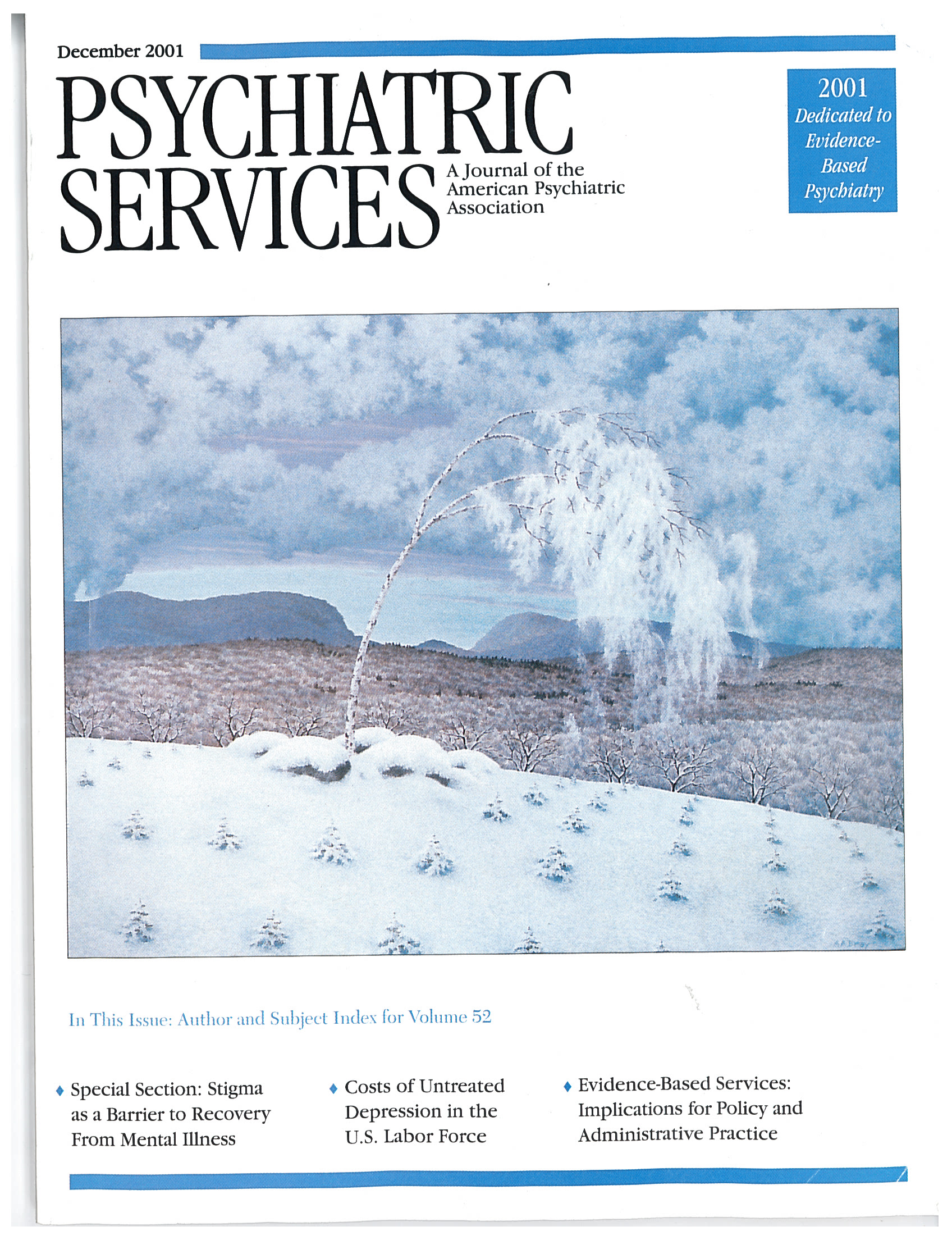Rates of HIV Infection Among Probationers and Parolees With Mental Illness
To the Editor: Rates of HIV infection among people with severe mental illness have been found to range from 4 percent to 23 percent, with an average rate of 8 percent (1,2). The highest rates in this population were found among those in inpatient settings for the treatment of comorbid psychiatric and substance use disorders (18.4 percent) and among those in homeless shelters (19.4 percent) (3). We examined rates of HIV infection among probationers and parolees with severe mental illness, most of whom were serving all or part of their sentence under community supervision.
During eligibility screening for a study to examine reincarceration of probationers and parolees with severe mental illness, participants were asked if they had ever been tested for HIV. Participants who had been tested were asked about their test results. Of those screened, 254 met diagnostic criteria for schizophrenia and major affective disorders as assessed by the Quick Diagnostic Interview Schedule (4). Two-thirds of these participants (163, or 64 percent) were African American, 59 (23 percent) were white, and the remaining 32 (13 percent) were Hispanic, Asian, mixed, or other. A total of 186 (73 percent) were men. The mean±SD age of the sample was 34.7±9.1 years. More than half (150 participants, or 59 percent) had never married. The mean±SD number of years of education was 11±2.4. The median lifetime number of lifetime arrests was four.
Eighty-three percent (N=212) knew their HIV status, and 11 of these participants (5 percent) reported being HIV positive. Among the 23 participants who were homeless, four (17 percent) reported being HIV positive. Women had the lowest rate of infection; only one of 56 women who knew their HIV status (less than 2 percent) reported positive test results. The infection rate among the 55 men and women who reported exchanging sex for money or substances —four persons, or 7 percent—was slightly higher than the rate for the overall sample.
These findings provide further evidence for the validity of current estimates of high rates of HIV infection among persons with severe mental illness. This population is at a particularly high risk of infection because of its high rates of comorbid substance abuse, homelessness, and sexual risk behaviors. More efforts are needed to implement HIV prevention education. Probationers and parolees with severe mental illness are frequently mandated to receive treatment from mental health agencies in lieu of incarceration. Unfortunately, most mental health agencies do not actively address HIV issues (5). Mental health providers need training and education in HIV prevention to increase their skills and comfort in dealing with HIV issues and to help prevent transmission.
The authors are affiliated with the Social Work Mental Health Research Center in the School of Social Work at the University of Pennsylvania in Philadelphia.
1. Carey M, Weinhardt L, Carey K: Prevalence of infection with HIV among the severely mentally ill: review of research and implications for practice. Professional Psychology: Research and Practice 26:262-268, 1995Crossref, Google Scholar
2. Cournos F, Bakalar N: AIDS and People With Severe Mental Illness: A Handbook for Mental Health Professionals. New Haven, Conn, Yale University Press, 1996Google Scholar
3. Cournos F, McKinnon K, Rosner J: HIV among individuals with severe mental illness. Psychiatric Annals 31:50-56, 2001Crossref, Google Scholar
4. Bucholz KK, Marion SL, Shayka JJ, et al: A short computer interview for obtaining psychiatric diagnoses. Psychiatric Services 47:293-297, 1996Link, Google Scholar
5. Brunette M, Mercer C, Carlson C, et al: HIV-related services for persons with severe mental illness: policy and practice in New Hampshire community mental health. Journal of Behavioral Health Services and Research 27:347-353, 2000Crossref, Medline, Google Scholar



